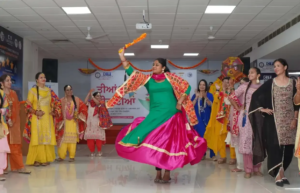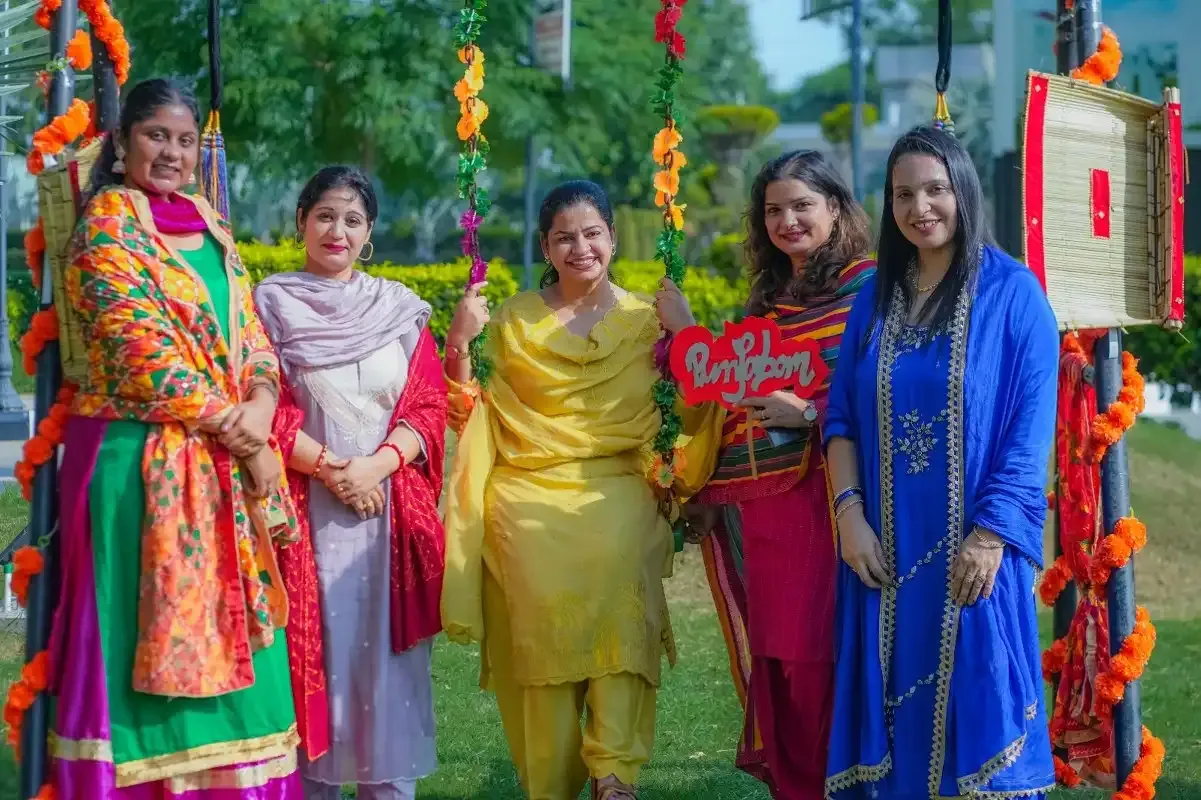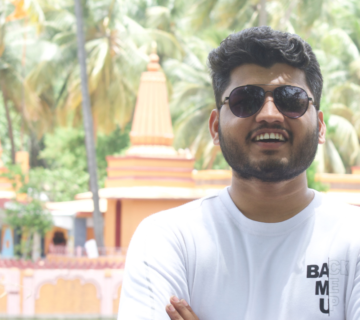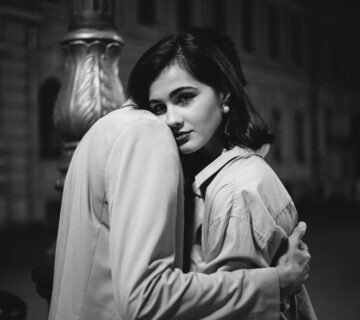Punjabi women occupy a rich and dynamic place in Indian and global society, known for cultural pride, resilience, and contributions in several fields. Embodying the essence of Punjab – a land known for passionate and warm-heart people – Punjabi women are fet for their most unique blend of tradition and modernity, history, faith and evolving social roles. It’s a legacy born of this paper examines the different dimensions of Punjabi women,
ranging from their position in the family and society to their progress in the social, economic, and professional spheres.
Cultural heritage of Punjabi women
Punjab is locate in the northern part of India known for lush green landscapes, grand festivals,
and history steeped in spiritual strength and resilience. These women are proud carriers of cultural heritage, balancing their roots into the traditional village life with the demands of a more modern world. Their customs and clothing, definitely folk dances like Gadha and Bhangra, traditional cooking methods, and of course,
the Punjabi language and dialects, which define them and play a huge part in determining
Clothes and Personification: Part of the identity of Punjabi women, traditional clothing encompasses colorful salwar kameez, dupattas, or phulkari scarves, all revealing bold, bright colors which can hardly characterize any other culture than Punjabi. Intricate embroidery,
called phulkari literally “flower work”, is particularly distinctive and conveys designs which have been handed from generation to generation. More elaborate costumes are even worn for wedding and festivals and the jewelery includes choras, tikkas and heavy necklaces for the bridal occasion,
which gives an elegant touch of royalty.
Food and Hospitality: Punjabi women are famous for their culinary skills. Mukki di roti and sarsan da saag, dal makhani and butter chicken are not unknown items to their menu. Hospitality is bestowe much importance and runs deep in the blood of the Punjabi families. A Punjabi household provides bountiful portions,
and open hands are always seen as a welcome feature. What makes it even warm is its fantastic community sense which has become an identity to the Punjabi woman and addresses the very generous spirit of women belonging to the Punjabi community.
Faith and Spirituality: Religion forms a very central role in most Punjabi women’s lives, and Sikhism forms very strong normative features for many such women. Sikhism, a religion founded Guru Nanak in the Punjab in the 15th century, is found on equality and benevolence. Many service-oriented (siva), self-disciplined and community-serving Sikh Punjabi women also embody these foundations of their religion. Initiated into this life of spirituality as an Amrit-dhari Sikh woman wears an iron bracelet called a kara,
often covering her hair with a kiski or chini as badges of their profession.
Gurdwaras, or Sikh temples, serve as an anchor of Punjabi community life. Punjabi women are actively involved at these religious centers through volunteer activities: from cooking in the communal kitchen to religious studies and cultural education. This notion of Karat Karo, Naam Japu, and Vand Chhako-earn a living honestly,
remember God, and share with others-plays a significant role in their lives and dictates both personal and community-based actions.

Education and Work Experience.
Historically, education for Punjabi women was socially confin and higher education was primarily out of bounds. However, in the last few decades, education for women has become a high priority in Punjab. Today,
Punjabi women can seen pursuing higher education and achieving excellence in different fields-ranging from medicine and engineering, arts and technology to business. Punjab’s cities, Chandigarh,
and Amritsar boast of prestigious institutions that produce women leaders, entrepreneurs, doctors,
and scientists who are leaving their mark nationally and internationally.
Just like India’s first lady police, Kiran Bedi, and the honorable politician Navjot Kaur Sidhu, many more women are flourishing in their respective domains. Punjabi women are steadily moving forward as politicians, businessmen, journalists, and even in often stereotypically masculine industries. All these achievements indicate growing societal and economic interest in education and career ambitions.
In terms of marriage and family, roles and expectations are equally varied. Many Punjabi people accept the role and respect that tradition has to offer; however, this is not true for all. And with modernization,
more and more families are today accepting daughters-in-law who have pursued higher education and sometimes even careers. End
Family is the core of Punjabi society. The Punjabi woman was a full-time caregiver and a cultural custodian. The bond of extended family members often defines an extended Punjabi household and roles of women are vital in that as well. Arranged marriages are still the norm but there has been a gradual shift towards love marriages,
mostly in urban areas.
Wedding customs are extensive and comprise different kinds of pre-wedding rituals, such as mehndi, sangeet, and chori ceremony where the bride is bedecked in red and white bangles. All those rituals are celebrate.
Role in folk arts and cultural preservation
Punjabi women have played a very vital role in the preservation of folk arts like dance, music, and storytelling. Gadha and Sami kinds of dances represent the full-fledged festive spirit of Punjab; women perform in front of a playlist, which has stories about love, family, and social life. These artworks help keep Punjab’s folklore and oral history breathing as they hand down cultural stories to the future.
The women are mainstreaming Punjabi folk music, especially in songs which are done in life events. These dialects consist of songs loaded with humor, wit,
and wisdom and are more embracing of daily experiences. For instance, Tapas and Sahaag are sung at weddings in the name of love and happiness while creating cultural continuity.
The Punjabi Diaspora: Women as Cultural Ambassadors
Punjabi diaspora can seen throughout the world- majorly in Canada, United Kingdom, USA and Australia. Women from the community-act as cultural ambassadors at such terminuses-by taking their traditions and values to completely new places with adapting into modernity. Thereby by balancing their identities they organize community events, teach children Punjabi, and participate in cultural festivals of the host country in these new landscapes.
Over the years, immigrants have seen Punjabi women flourish in all walks of life-from academies and sports to politics and business. One such bright Canadian Member of Parliament from overseas Punjabi circles is Ruby Sahota. Diaspora Punjabi women are often actively involve with efforts to preserve and promote their culture and appear on the political scene,
proving to a wholesome influence on the lives of the younger generations.
Challenges and resilience
Although there has progress regarding solving these problems, many issues still exist amongst the women of Punjab. The significant issues include major dowry,
gender discrimination, and limited access to educational institutions. Despite all this, the preference for male children has created an imbalance in Punjab’s population, which is creating grave social problems. On the other hand,
these issues are slowly dealt with via initiatives launch governments and non-government organizations working towards schooling girls, better healthcare, and raising awareness programs on the rights of women.
In the last few years, Self-reliance courses for women, vocational training courses, and financial empowerment courses have uplifted the morale of these women in both urban and rural Punjab and encouraged them to make positive changes in their communities. The resilience that the women in Punjab showed in their face in pursuing these activities is absolutely glowing of woman strength.
Read More: Doublelist Myrtle Beach : A Unique Platform for Connections
Conclusion
These women of Punjab themselves provide an example of the colorfully rich spirit of Punjab. Whether it is through preserving the culture, playing a beneficial role in society, or excelling in every field,
she moves ahead breaking all sorts of barriers at the very same moment that she nourishes her roots.
She makes both tradition and modernity comply with each other’s demands and
redefine what it is to be part of a culturally rich yet forward-thinking society.













